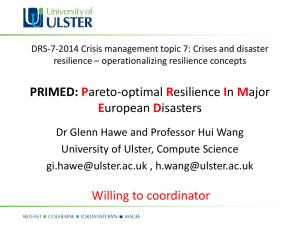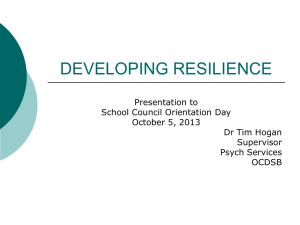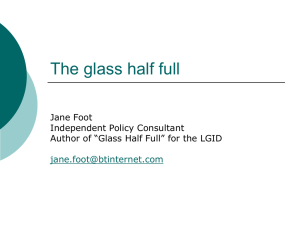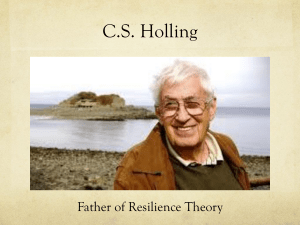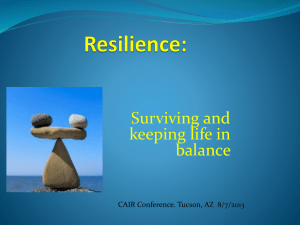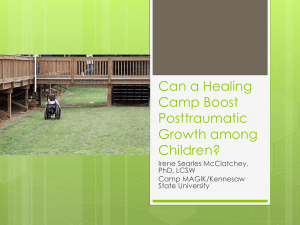Dr Peter Ilves
advertisement
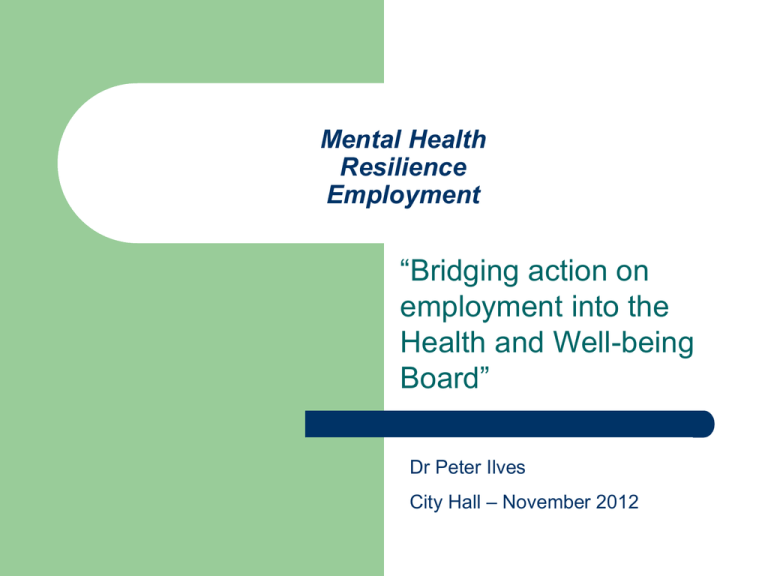
Mental Health Resilience Employment “Bridging action on employment into the Health and Well-being Board” Dr Peter Ilves City Hall – November 2012 Health and Wellbeing Boards What will they want? What will they need? What will they do? How will this match with: – – – – The “integrated – whole system approach” Mental health Employment Resilience The Headlines Joint Strategic Needs Assessment Joint Health and Wellbeing Strategies Priorities will inevitably need to be: – – – Mental health Integrated Health and Social Care Personal and community resilience Prevention and self management Empowering individuals and communities Realising assets in the system Revisit the facts Lifetime risk: 1 in 4 suffer depression and/or anxiety 1 in 5 women 1in 3 men ONS 2007 Office of National Surveys of adult psychiatric morbidity in England 16.2% of adults aged 16-64 met the diagnostic criteria for at least one disorder in the week prior to interview Chicken and the egg – – mental health/wellbeing or Unemployment Primary care and community care Medical certification – local solutions Volunteering – – Realising the assets in the system – – – hands on approach Brokering relationships Expert patients/people service users Carers Lived experience Taking personal and community responsibility – “maintained purpose” Working together and/or under the wing of HWBs Recognising the true impact on health – physical and mental A story to tell My “Jerry Maguire” moment Beginnings - Personal resilience low with little integrated health care available. Very Primary and Secondary care service dependent. Community resilience having little impact Personal resilience Primary Care Integrated care Community resilience Acute and secondary care Transition: individuals building personal resilience. Still a health and social care dependent phase. Integrated health care developing. Community resilience still not fully realised Personal resilience Primary care Integrated Care Community resilience Acute and secondary care Journeys end: Personal resilience and community resilience developed – peer support and networked support in place. Primary care and integrated care systems working closely together. Secondary care demand acutely and non acutely reduced. Primary Care Personal resilience Community resilience Acute and Secondary care Integrated care Watch how a persons journey takes them through this final model and how the contact with health and social care is reduced but remains more consistently in the community setting. Observe how personal skills and peer support plays its part. Primary Care Personal resilience Day 1 Day 365 Community resilience Acute and Secondary care Integrated care “HWBs – they know where we are!” The sheer numbers are staggering Unemployment rises and patterns vary month on month The effects are significant on: – – – – – – – Mental Health Physical Health Communities Individuals Drugs Alcohol Crime HWBs we can run but we cannot hide!! Call to action……. Thank you Thank you for listening!



